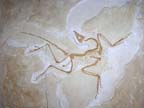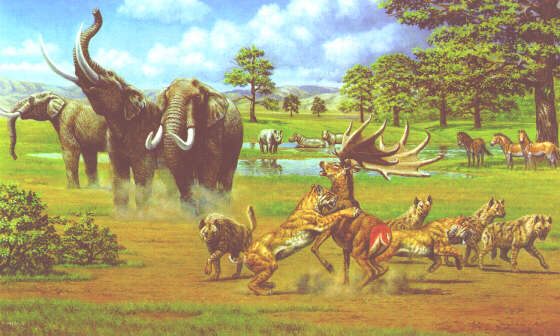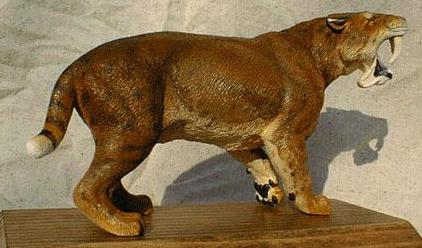 |
 |
 |
 |
 |
Produced
by the Population Genetics and Evolution class, Furman University |
||||
 |
 |
 |
 |
 |
Produced
by the Population Genetics and Evolution class, Furman University |
||||
 |
The
Neogene: Nimravids |
 |
||
| The family
Nimravidae, also known as the false saber-toothed cats, were large mammalian
carnivores, belonging to the suborder Feliformia. They lived in parts
of Europe, Asia, and North America from the Oligocene to the late Miocene.
They resemble felids in the shape of their skull, modifications to the
dentition for hypercarnivory, and retractable claws. However, several
distinct features in the ear, skull, and dentition set them apart from
true cats (Bryant 1991). They had a short-faced skull, heavy-set body,
short legs, and long necks (Gillette 2010). But they are most well known
for their distinctive saber teeth. These massive curved upper canines,
are a classic example of convergent evolution with Smilodon and
the marsupial Thylacosmilus. There is debate over how the saber
teeth were used when hunting prey; they may have been used to bleed out
prey items or they may have used them more precisely after pinning down
their prey. The short limbs did not make them very efficient runners,
suggesting that they were most likely ambush predators, taking advantage
of short bursts of speed (Gillette 2010). Page by Megan Aprill |
 |
| Model of a nimravid from: linkandpinhobbies | |
|
Bryant HN. 1991. Phylogenetic relationships and systematics of the Nimravidae (Carnivora). J Mammal 72: 56-78. Gillette L. 2010. Fossil Mysteries. San Diego Natural History Museum. Accessed April 18, 2010. Wikipedia. 2010. Nimravidae. Accessed April 18, 2010. |